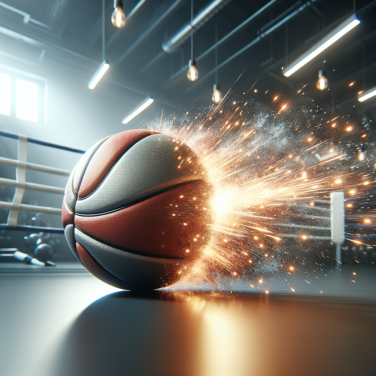Perfecting Your Delivery: Key Fundamentals of a Winning Stone
Perfecting your delivery in curling is an essential aspect of mastering the game. A winning stone is not just about strategy but also about the precise execution of that strategy, which begins with a flawless delivery. The fundamentals of an effective delivery are rooted in balance, timing, consistency, and the fine-tuning of technical elements.
Firstly, balance is critical. From the starting hack to the release of the stone, maintaining a stable and balanced body position ensures accuracy. Good balance is achieved by positioning your body correctly in the hack, with your sliding foot placed at the back and your body weight evenly distributed. Practicing a stable and level glide out of the hack without wobbling or shifting weight will improve your balance.
Timing plays a significant role in determining the weight and trajectory of the stone. The movement of the stone should align with the leg drive out of the hack. A smooth and well-timed leg push, synchronized with the forward motion of the stone, is crucial for controlling the stone’s speed. Furthermore, the timing of the release is paramount. Releasing the stone too early or too late can affect its path and the intended end result.
Consistency is the cornerstone of precision in curling. Repeating the same delivery method every time allows for minor adjustments to be more predictable and controlled. Practice is the key to consistency. Through repetitive motion and muscle memory, the body learns to perform the delivery in the same manner, reducing variables that can alter the stone’s course.
Regarding technical elements, the grip on the stone must be firm yet gentle, ensuring that there is no unnecessary rotation or wobble upon release. The turn, or the handle rotation, given to the stone determines its curl. This rotation should be consistent in both amount and speed to allow the sweepers to better judge how the stone will behave on the ice.
Additionally, the slide path during delivery should be straight towards the target. Any lateral movement can cause the stone to deviate from its intended course. Your shoulders and hips should be aligned with the skip’s broom to guarantee a linear path.
Body alignment and weight distribution during the delivery also significantly impact the stone’s travel. The delivery arm should extend in the direction of the throw, while the non-delivery arm can aid in balance by staying out to the side or being used to subtly steer the stone in the desired direction.
Sweepers play a vital role in the delivery of a winning stone.
Read also:
Mastering Bocce: Tips and Strategies for the Classic Lawn Game
Sweeping with Precision: Enhancing Stone Trajectory and Speed Control
Sweeping with precision is an essential skill in curling that influences both the stone's trajectory and its speed. To maintain an efficient line of delivery and ensure the stone's precise arrival at the desired location, it is important to understand and apply effective sweeping techniques.
Firstly, it is vital to recognize the impact of sweeping on the stone's friction with the ice. When sweepers apply their brooms to the ice in front of a moving stone, they create a thin layer of water which reduces friction, allowing the stone to travel further and potentially altering its curl. Successful sweeping calls for both streness and delicacy to manage the stone's path and speed accurately.
The physical mechanics of sweeping require sweepers to adopt a synchronized and consistent brushing motion. Sweepers should maintain a firm downward pressure while moving their brooms rapidly back and forth across the ice. The broom head should stay in full contact with the ice surface. To enhance their efficiency, sweepers should position themselves such that their sweeping motion is directly in line with the stone’s path.
Communication between the sweepers and the skip is of pivotal importance. The skip oversees the trajectory and can best determine if and when sweeping is needed to either maintain the stone's course or to give it that extra distance it needs without significantly altering its intended destination.
Sweepers can modulate the stone’s speed by varying the pressure and speed of their sweeping. Gentle strokes are best used for minor adjustments while more vigorous sweeping is necessary when significant alterations to the stone’s momentum are required. Sweepers must practice to identify the right balance of force and rhythm to match the weight of the stone and the ice conditions.
Moreover, the stone's trajectory can also be subtly influenced by sweeping on one side or the other. Sweeping on the inside edge can maintain or increase the stone's curl, whereas sweeping on the outside edge can straighten the stone's path or reduce its curl. This nuanced technique is particularly handy in strategic play to get around guards or to tap stones to a precise location.
Lastly, different types of broom heads can affect sweeping effectiveness. Synthetic brooms are known for producing less debris but may not heat up the ice as much as traditional hair brooms. Teams often select their broom heads based on the conditions of the ice and the specific needs of a given shot.
It is clear that mastering sweeping techniques is a blend of strength, skill, coordination, and strategic thinking.




